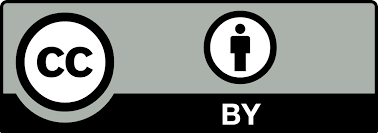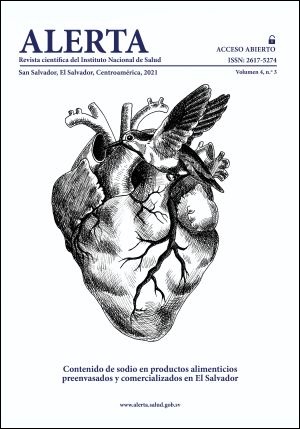Revista Alerta, cuatro años de retos y métricas de calidad
DOI:
https://doi.org/10.5377/alerta.v4i3.12039Resumen
En la historia de la humanidad han existido, entre otros acontecimientos importantes, dos hitos que han permitido que la ciencia avance y se desarrolle en gran escala. El primero de ellos, fue la escritura, que determinó el salto de la prehistoria1 y el segundo se produjo a partir de la invención de internet, porque con este, además del intercambio de información y la conexión entre los investigadores de todo el mundo2, se encauzó la digitalización de las publicaciones y se incrementó la colaboración internacional.
La difusión de las publicaciones en línea durante casi 20 años, ha permitido no solo disminuir los costos, incrementar su alcance, rapidez en la divulgación de la evidencia científica y su reutilización1,2, sino también ha favorecido que el canal preferido para publicar los avances de la ciencia, sean las revistas científicas electrónicas. A pesar de ello, actualmente estos canales se diversifican cada vez más3, por tal razón, Alerta está desarrollando un plan de divulgación en redes sociales, con la finalidad de incrementar la visibilidad de sus publicaciones. Según datos de google analytics se han tenido 89 756 usuarios en los últimos tres meses y los países que realizan mayor búsqueda orgánica son México (35,10 %), Perú (13,45 %), El Salvador (11,64 %), Ecuador (9,04 %), y Colombia (5,95 %).
Desde la creación de las primeras revistas en 1665, se habrían publicado hasta el 2010 unos 50 millones de artículos, solamente CrossRef distribuye cada año más de 97 millones de DOI a unas 60 000 revistas1; esta magnitud trae aparejado un reto: saber discriminar con criterios y filtros de calidad las revistas y artículos relevantes.
Tradicionalmente, la calidad de las revistas se ha basado en la aceptación en índices de revistas científicas y el número de citas recibidas4,5, de hecho, para que las revistas sean atractivas a los autores deben ser incluidas en bases de datos como Web of Science (WOS) y Scopus3. Si bien es cierto, Alerta se encuentra indexada en sitios regionales relevantes como Lilacs, REDIB, AmeliCA, Latindex, Periódica y Clase, que ayudan a visibilizar las publicaciones de América Latina, queda aún un largo camino que seguir, en cumplimiento de las buenas prácticas de publicación, para llegar a «ser visibles globalmente»1.
Con relación al impacto, el índice h de Alerta actualmente es de cinco. El artículo más citado es «introducción a los tipos de muestreo»6 con 40 citaciones y 120 466 vistas, el número total de citas de los artículos publicados en Alerta asciende a 90, el año con más citaciones ha sido el 2021 con 36 citas, a pesar de que aún estamos a mitad del año, esto podría estar en relación con la difusión en las redes sociales.
Otro de los aspectos evaluados dentro de las buenas prácticas para las revistas científicas7 es la endogamia. Esta tiene multiplicidad de acepciones, pero en este caso nos referimos a la endogamia autoral y editorial.
En sus comienzos en el año 2018, Alerta tuvo una endogamia del 55,5%, es decir que la mayoría de sus manuscritos provenían del INS o de miembros del comité editorial, en el año 2019 este porcentaje disminuyó al 48%, alcanzando en el año 2020 el porcentaje de endogamia del 27%. Se han buscado autores de otras instituciones y países, y mecanismos que privilegien el mérito científico del contenido, procurando una revisión objetiva y no privilegiar los trabajos de los propios editores o investigadores de la revista. Y es así que, durante el año 2021, de 37 publicaciones, seis fueron del INS (dos de estas en coautoría con otras instituciones) y tres fueron publicaciones provenientes de miembros del comité editorial. Esto constituye un 24% de endogamia autoral y editorial. El tercero de los retos, para los suplementos venideros es incrementar la colaboración científica nacional e internacional, manteniendo una endogamia por debajo del 25%.
Durante estos cuatro años se han recibido 150 manuscritos, de estos, se han publicado 99 (66%), con un promedio de 12,3 artículos publicados por suplemento. La revista tiene una tasa de rechazo de 34%, de ellos un 9,3% son rechazados por la revista por problemas éticos, técnicos o metodológicos, el 6,6% es a causa de la declinación por parte de los autores y un 18% es por falta de respuesta o no cumplimiento de los tiempos editoriales.
Este año se han realizado 37 publicaciones (13 corresponden a este número) de estas el 56,7% han sido originales, es decir, que se han publicado 21 artículos originales en el año, el incremento de las publicaciones, con relación a los años anteriores, se debe al número especial dedicado a COVID-19. En los tres años anteriores el promedio de originalidad ha estado por encima del 59%, el año 2019 tuvo el más alto porcentaje de originalidad anual, con un 81%.
Descargas
412
Descargas
Publicado
Cómo citar
Número
Sección
Licencia
Derechos de autor 2021 Nadia Patricia Rodríguez Villalta

Esta obra está bajo una licencia internacional Creative Commons Atribución 4.0.
Declaración de privacidad:
Los artículos de Revista Alerta están publicados bajo una licencia creative commons 4.0 CC BY: https://creativecommons.org/licenses/by/4.0/

Los autores conservan todos sus derechos sobre la obra y acuerdan permitir que los artículos sean copiados y distribuidos por cualquier medio, siempre que se mantenga su autoría y reconocimiento de la publicación, sin otras restricciones adicionales.




